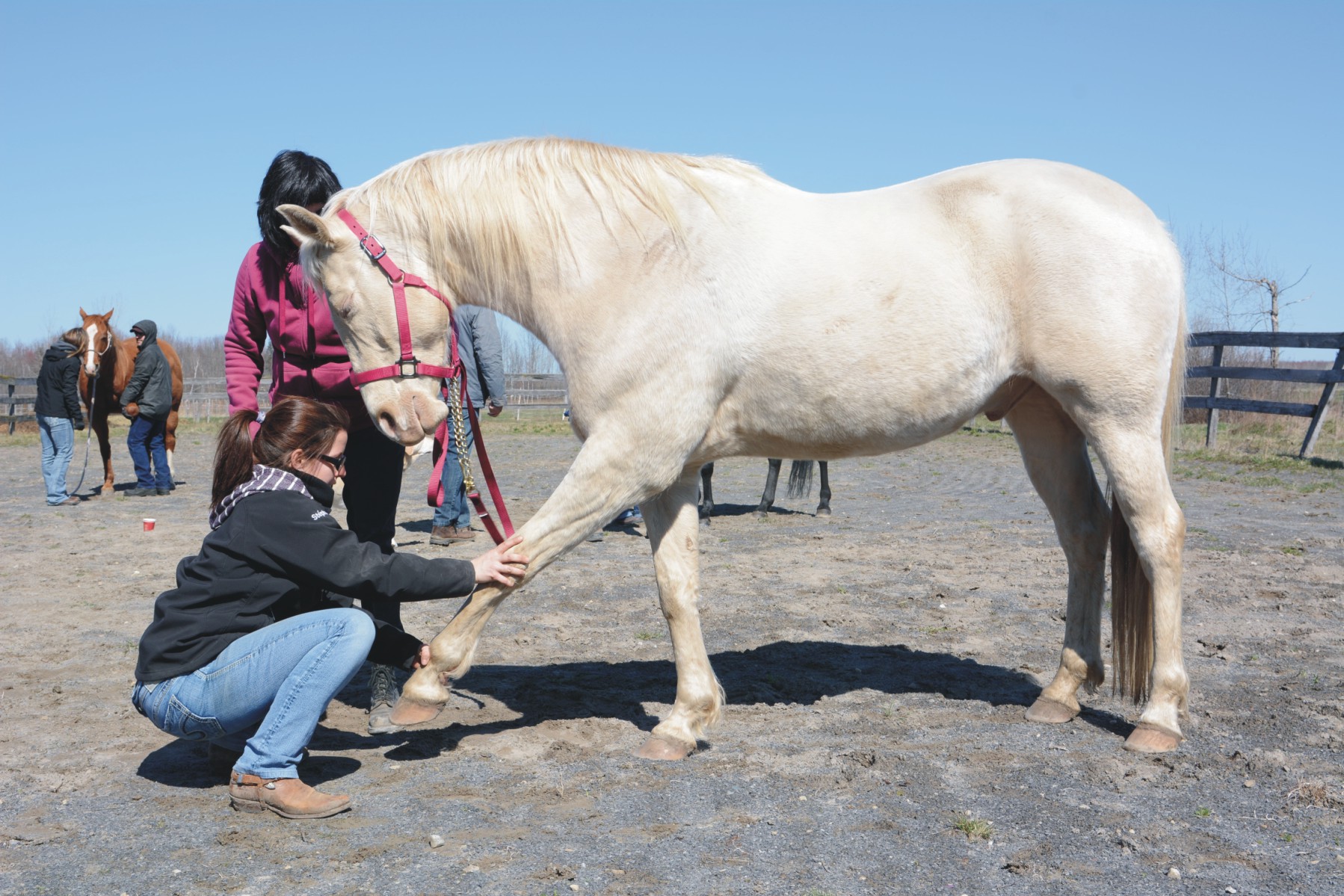World Class Equine Osteopath Gives Conference for Local Riders

On Saturday April 23rd, six horses and twelve women and men gathered in the outdoor arena at Shamrock Stables for a conference with Equine Osteopath, Alexandre Lamarsalle.
The workshop, organized by Valérie Paquet of Ormstown’s Les moulées Yval Poulin, focused on a series of stretches to do with your horse after exercise. These increasingly popular soft tissue release techniques are intended to enhance performance, improve flexibility, prevent injury, and overall strengthen the bond between horse and rider.
Alexandre Lamarsalle first received the title of Osteopath from the Ministry of Health in France. After moving to Quebec in 2006, he completed a year of additional study at the Collège d’Études Ostéopathiques de Montréal. He is the founder of Equisens Osteopath Clinic with locations in Montreal and Cornwall. Equine osteopathy has benefits across all riding disciplines. Alexandre works with horses and riders from Team Canada show jumpers, to Cirque de Soleil Cavalia performers, to amateur equestrians. Saturday’s participants included barrel racers, dressage, and trail riders.
A casual observer to the demonstration might have described a man pulling a horse’s leg frontwards and backwards; but as Alexandre explained throughout the workshop, he was actually suggesting a movement for the horse to do itself. After all, if you pull against a thousand pound plus animal, it will likely win. Alexandre says: “If you think of the muscle like an elastic band, you don’t want it just bouncing back and forth, which is what it will do if you force a movement. You’ll pull against him and he’ll pull back. What you want is to do is to elongate the tissues as much as possible to release tensions.” The results include a horse that will warm up faster and be easier to ride.
Alexandre explains that the osteopathic practice provides an opportunity for horse and human to be more connected. If you are performing this series of stretches regularly (he suggests at least three times a week), then you are going to notice if tensions or sensitivities arise. You are then able to respond to that information and change your routine accordingly. “It can be a method of self-diagnosing small problems before they become big ones,” he says. “Sometimes we forget how important touch is as one of our senses. Watching a horse move and diagnosing lameness can be useful, but you can also learn a tremendous amount from how an animal responds to being touched. You can feel the animal’s stress and pain, and whether an animal is comfortable in its own skin.”
Saturday’s workshop was part of a series of spring conferences organized by Valérie Paquet. The next workshop will feature a vet and nutritionist discussing foundering and choosing the right type of feed for a horse’s behavior. It will be held on May 5th from 6pm to 8:30pm at Les moulées Yval Poulin in Ormstown. For more information contact Valérie at 450-843-8333.